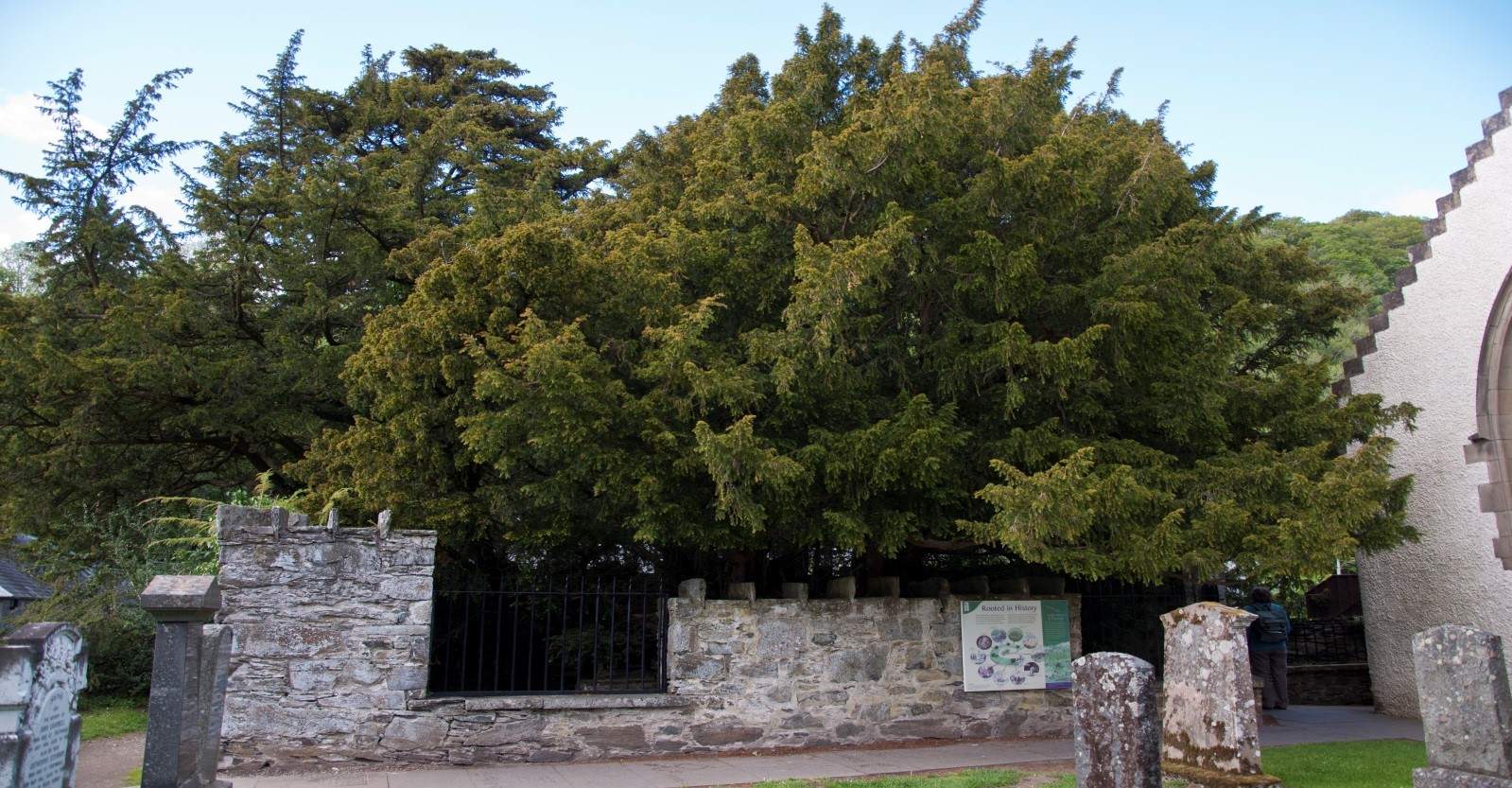The parish church is on an earlier Christian site, dedicated to Coeddi, Bishop of Iona (died 712), founded about 700 AD from Iona. Preserved in an alcove in the church is an early hand bell in Irish style (iron with bronze coating), dating from the 7th or 8th century, one of several to have survived in highland Perthshire. A permanent display on the cross slabs and the early church was recently installed in the building. Fortingall has one of the largest collections of early medieval sculpture in Scotland. The area surrounding Fortingall has one of the richest concentrations of prehistoric archaeological sites in Scotland, including Càrn nam Marbh, Gaelic ‘Cairn of the Dead’, a re-used bronze Age tumulus that is said to have been used as a burial ground for plague victims in the 14th century, and a focus for the Samhain festival. Other sites include Fortingall stone circle, standing stones including the Bridge of Lyon, ‘four-poster’ stone settings, ‘ring-forts’ (massive iron age house enclosures), many cup and ring marked stones and an extremely well-preserved medieval homestead moat, thought to be of Roman origin. Fortingall parish (now linked with Glenlyon) is one of the largest on Scotland and takes in Glen Lyon, notable for its’ mountain scenery and many archaeological sites, the country’s longest enclosed glen or mountain valley.
The Fortingall Yew is an ancient tree in its’ own walled enclosure within the village churchyard. It’s age is estimated to be anywhere between 3000 and 9000 years and it may be the oldest living tree – perhaps even the oldest living thing – in Europe. Place name and archaeological evidence hint at an iron age cult centred at Fortingall. The site was Christianised during the Dark Ages, perhaps because it was already a sacred place. The tree’s once massive trunk (52 ft) in girth when it was first taken notice of in writing, in 1769 with a former head of unknown original height, is split into several separate stems, giving the impression of several smaller trees, with loss of the heartwood rings that would establish its’ true age. This is a result of the natural decay of the ancient heartwood, which reduced the centre of the trunk down to ground level by 1770. In 1833 it was noted that “large arms had been removed and even masses of the trunk, carried off, to make drinking-cups and other curiosities.” It is protected by a low wall erected in 1785 to preserve it but it can still be easily viewed. The yew is male, however in 2015 scientists from the Royal Botanic Garden in Edinburgh reported that one small branch on the outer part of the crown had changed sex and begun to bear a small group of berries – an occurrence occasionally noted in conifers. This is the bit where I cannee get a hold of … According to local legend, Pontius Pilate was born in its’ shade and played there as a child. The Scottish origins of Pilate are far from clear but it is said he was born after envoys arrived from Rome to strike up diplomatic relations with Caledonian tribal leaders. At the time, Metellanus, the 17th King of Scotland (WHO?), held Dun Geal, or White Fort, in Glen Lyon with claims a member of the Roman delegation fathered a child with a Caledonian woman during the visit. Others claim Pilate was not born under the tree but instead played there as a child. Others claim he was born in southern Italy and that his father was in Fortingall when he received news of the arrival of his son.
The yew was held sacred by the Druids in pre-Christian times and regarded for their qualities of longevity and regeneration. Churchyards were often build near established yews which were considered to signify a sacred space. In Celtic culture, the tree came to symbolise death and resurrection with the needles of the tree feared as highly toxic.

